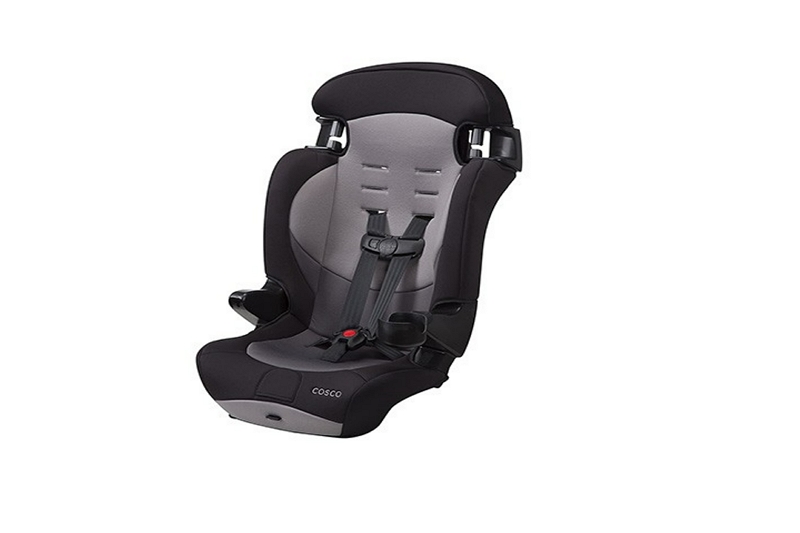It is important to know how many pounds for a booster seat in California when you are choosing the best accessory for your child. If you choose one that does not go up high enough, then it will be unsafe and dangerous to use. Read this blog post to find out How Many Pounds For A Booster Seat California and how we measured them.

Pounds For A Booster Seat California
A child must weigh at least 40 pounds to use a booster seat. It is recommended that children stay in the five-point harness until they are tall enough and big enough for their body size, which can be around eight years of age before the growth spurt starts.
This may vary depending on how quickly your child grows. When using an adult belt with no back support rather than a shoulder strap, make sure you have more slack taken out of it so it will fit tightly across your lap without slipping up or down off of your hips.
You should also use both straps if possible even when there’s only one available because this helps keep them secure during accidents too! Booster seats help protect against internal injuries caused by wearing just belts alone as well as keep the child safe in an accident.
It’s also good to keep kids rear-facing as long as possible whenever they are under 40 pounds, like up to two years old if you can.
When Can A Child Use A Booster Seat In California?
A child can use a booster seat in California any time after their eighth birthday. According to the law, children under eight years old are required to ride with a safety-certified car seat or with an adult who is at least four feet nine inches tall.
Children over five feet may also choose not to use a booster if they are able to sit properly and comfortably behind the driver’s seat without slouching. A good rule of thumb for parents is that when your child reaches around 50 pounds he or she will have outgrown using a booster as well.
What Are The Height And Weight Requirements For A Booster Seat In California?
The height requirement is 24 inches. The weight limit for the booster seat is 40 pounds. Lastly, there are no exceptions to this rule aside from children under four feet tall or those with special needs. These limits must be met in order for a child to use one safely and legally on California roads.
How Much Should A Baby Weigh Before Forward-Facing?
A baby should weigh at least 18 pounds before they are able to be forward-facing. It is important for parents to keep in mind that babies may not reach this weight until after their first birthday. Each child’s growth and development will vary, so it is best to talk with your doctor about how much your baby weighs during checkups.
How Much Does The Graco 4ever DLX 4 In 1 Car Seat Weigh?
The Graco weighs less than 18 pounds. There is a removable, washable seat pad on the car seat to keep it clean and comfortable for your child. You can also adjust the recline as needed so that you can find the most comfortable position for your baby’s head and neck while they are sleeping or awake during their ride in this car seat.
The harnesses fit children from 22 – 65 lbs., but there is an infinite-use fabric stroller cup holder included with the purchase of this Graco infant carrier.
How Do You Change The Recline Position On A Graco 4ever DLX?
To recline the seat, press and hold down on the front of the headrest. To return to an upright position you will need to lift and pull it back up into place. The Graco Travel System comes with a base that has LATCH connectors for your convenience – no buckles or belts required!
Additionally, there is a built-in lock-off so you can rest assured knowing your car seat won’t move more than one-inch side to side as well as forward and backward when installed correctly in these types of vehicles.
When Can I Remove The Graco 4ever Infant Insert?
If your baby is four months or older, you can remove the insert. Another option is to purchase an infant seat without the insert. The Graco SnugRide 35 model does not come with one and could be a good fit for your needs if that’s what you prefer.
It has side-impact protection in addition to EPS foam head support which keeps infants secure during travel even on sudden stops or turns at higher speeds than many other car seats are capable of safely accommodating.
This particular model also comes with two types of buckle straps instead of just one type like most models do so it requires less force to tighten them by pressing down firmly until they click twice securely into place compared to buckles that require three clicks before being deemed secure.
How Do You Install A Graco 4ever DLX Forward-Facing?
To install a Graco 4ever DLX forward-facing, make sure your little one is at least 25 pounds and in the upper weight range for forward-facing.
Then turn it over to access the top tether path.
Thread each side of the vehicle’s lap/shoulder belt through this path, then buckle according to manufacturer instructions.
Pull both sides until they are tight with less than one-inch movement when pulled with 30 lbs of force in any direction away from locked mode. You should not be able to fit two fingers between the baby’s back and harness strap while installed correctly.
If using latch connectors, route them around headrest posts before attaching hooks on both ends to lower anchor attachments located under padding behind the plastic cover plate for rear-facing installation only.
